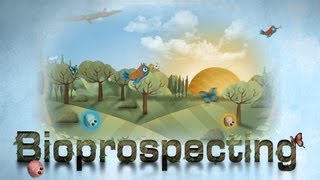(单词翻译:单击)
Your car, the heating system in your house, your gas stove.
你的车,你家里的暖气系统,你的煤气炉。
Most of the energy you use comes from fossil fuels, which present a couple of problems.
你使用的大部分能源都来自于化石燃料,这带来了一些问题。
First, there are limited supplies of fossil fuels, so the more we use, the less we've got.
第一,化石燃料供应量有限,我们用得越多,地球存量越少。
And second, the use of fossil fuels is the main cause of climate change
第二,燃烧化石燃料是造成气候变化的主因,
because it releases large amounts of carbon dioxide into the atmosphere.
因为它将大量二氧化碳释放到大气中。
Biofuels come from natural, renewable sources like plants,
生物燃料则来自大自然,是像植物一样的再生资源,
so they have the potential to reduce our reliance on those limited supply fossil fuels and reduce the risk of climate change.
有可能减少我们对有限化石燃料的依赖,并降低气候变化的风险。
Most biofuels today are made from corn grain that is fermented into ethanol.
我们今天使用的生物燃料大部分来自于被发酵成乙醇的玉米。
But we have a limited supply of this corn, so it's not a solution to the limited supply part of the quandary.
但是这种玉米的产量是有限的,所以这种燃料的窘境在于解决过低的产量。
It also takes a lot of resources to grow corn grain.
并且生产这种玉米需要耗费大量资源。
Strike 2! A potential solution: Using cellulose instead of corn grain to make ethanol.
发现2!一个潜在的解决方案:使用纤维素来代替玉米制造乙醇。
Cellulose is far more abundant than corn grain and takes less energy to produce.
纤维素比玉米的产量更高,并且需要更少的资源来产出。
In fact, it's the most abundant organic molecule on the planet!
事实上,它是世界上存量最高的有机分子!
Cellulose is the main ingredient found in a plant's cell wall.
纤维素是植物细胞壁里的主要组成部分。
Plants generate cellulose from water and carbon dioxide during photosynthesis.
植物在光合作用下,从水和二氧化碳里生产纤维素。
So, where as using fossil fuels produce carbon dioxide,
所以,作为使用化石燃料产生的二氧化碳,
using cellulose-based ethanol might help remove carbon dioxide from the atmosphere.
使用基于纤维素的乙醇可以帮助减少在大气中的二氧化碳。

The main obstacle is that the cellulose molecule,
主要的障碍是纤维素分子,
a long, connected chain of glucose sugar protected by a tough, molecular sheath, is difficult to break apart.
一个长的、连接在一起的链状葡萄糖被一个坚硬的分子套保护着,所以很难将它们分解开。
Creating cellulose-based ethanol means first unwrapping that protective sheath
用纤维素制造乙醇,意味着需要先解开纤维素的保护层,
and then chopping up the cellulose into its individual glucose molecule.
才能将纤维素分解成单质葡萄糖分子。
Only once we have unpacked each glucose molecule, can we begin fermentation.
只有在我们分解每一个葡萄糖分子时,才能开始发酵过程。
But some microorganisms, like bacteria or fungi, break down cellulose for energy all the time.
但有些微生物,如细菌或真菌,不断分解纤维素以获得能量。
For example, dairy cows eat foods like hay or alfalfa, which are full of cellulose.
比如, 乳牛吃像干草和苜蓿这样富含纤维素的食物。
Microbes that live in their stomachs produce an enzyme called cellulase,
它们肠道中的微生物会生产纤维酵素,
which breaks apart the cellulose molecules so that the cow can use what's left for energy.
可分解纤维素分子,牛即可利用分解后的产物产生能量。
Researchers are now studying these kinds of microorganisms in the hopes of finding better ways to break down cellulose
研究人员目前正在研究这类微生物,希望能找到更好的方法分解纤维素,
so we can use it for our own energy needs.
以解决我们的能源问题。
The solution, they think, lies in finding microbes in nature that can produce the kinds of cellulase enzymes that we need.
他们认为解决问题的关键在于从自然界找到一种可生产我们所需的纤维酵素的微生物。
This process of searching for species in nature that can produce valuable products is called bioprospecting.
这种在自然界中寻找生物生产高价值产品的过程就叫做“生物探勘”。
To test whether or not a sample of microbes can break down cellulose effectively,
为了测定样本微生物能否有效分解纤维素,
researchers first grow the microbe in a test tube.
研究人员用试管培养微生物。
Then, they add a source of cellulose as the sole form of energy.
之后他们加入纤维素,以作为唯一能量来源。
If the microbe can't produce cellulase and break down cellulose, the test tube will remain unchanged.
如果微生物不能制造纤维酵素、分解纤维素,那么试管内就会维持原状。
But if the microbe produces the enzymes we are looking for,
但如果微生物可以制造我们想要的酵素,
it will be able to break down cellulose, use it for energy, and thrive in its test tube environment.
那么微生物就可以分解纤维素,作为能量来源,并在试管中繁衍成长。
If our microbial sample can break down the cellulose in the test tube,
如果样本微生物可在试管中分解纤维素
there is a chance we could use it to create a renewable and sustainable source of fuel for our cars from cellulose.
那就表示我们有机会用纤维素制造再生性、永续性的燃料,以供汽车使用。


